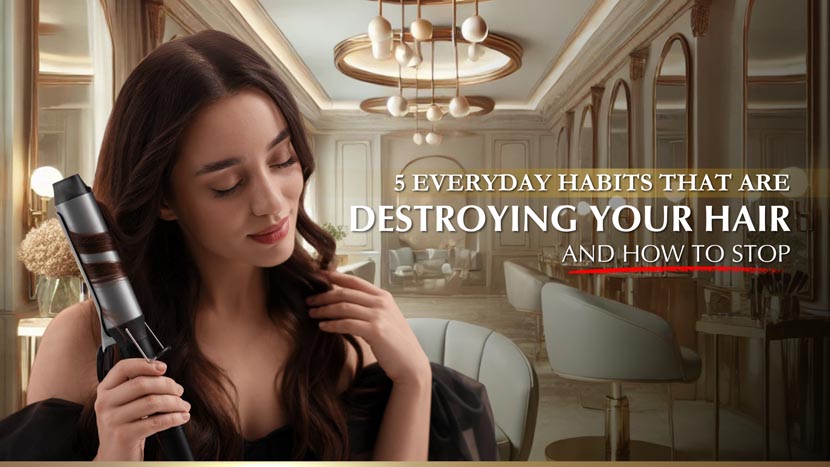5 EVERYDAY HABITS THAT ARE DESTROYING YOUR HAIR—AND HOW TO STOP

You wash it. You condition it. You try every product promising “shine,” “growth,” and “strength.” But your hair still isn’t thriving. What if the real issue isn’t your products at all—but the daily habits you don’t even realize are damaging your hair?
Let’s uncover 5 everyday hair habits that may be doing more harm than good—and more importantly, how to fix them with simple, healthy swaps.
1. Washing Your Hair Too Often (or Not Enough)
Your scalp produces natural oils that nourish and protect your strands. Washing too frequently strips those oils, leaving hair dry, brittle, and prone to breakage. On the flip side, infrequent washing can lead to scalp buildup and clogged follicles.
| THE DAMAGE | WHAT TO DO INSTEAD |
|
|
Healthy hair starts with a healthy scalp—and balance is key.
2. Heat Styling Without Protection
Flat irons, curling wands, and blow dryers are part of many routines—but when used without proper protection, they can cook your hair’s cuticle. This leads to moisture loss, protein breakdown, and serious split ends.
| THE DAMAGE | WHAT TO DO INSTEAD |
|
|
Remember, shiny doesn’t always mean healthy. Choose long-term strength over short-term style.
3. Brushing Too Roughly or While Wet
Your hair is most fragile when it’s wet—tugging at it with the wrong brush can cause serious breakage. Even on dry hair, aggressive brushing or using the wrong tools can rip strands before they have a chance to grow.
| THE DAMAGE | WHAT TO DO INSTEAD |
|
|
Be gentle. Your hair isn’t a battle—it’s a relationship.
4. Sleeping Without Protecting Your Hair
You move a lot while you sleep, and your hair feels every toss and turn. Without proper nighttime protection, all that friction against your pillowcase can lead to tangles, breakage, and dry ends.
| THE DAMAGE | WHAT TO DO INSTEAD |
|
|
Turn your 8 hours of rest into 8 hours of restoration for your strands.
5. Ignoring Regular Trims
We get it—you want length, not a cut. But holding onto split ends can actually prevent you from achieving longer, healthier hair.
Split ends travel up the shaft, causing more damage than you realize. By skipping trims, you risk needing to cut more in the long run.
| THE DAMAGE | WHAT TO DO INSTEAD |
|
|
Sometimes letting go of 1 inch now saves you 4 inches later.
You don’t need a 20-step hair routine or luxury salon treatments to see results. Often, the biggest changes come from the small things you do every day.
Through simply adjusting how you wash, style, sleep, and handle your hair, you’ll start to notice less breakage, softer texture, longer and stronger growth, and a more manageable, vibrant hair.
Break the bad habits. Keep the good ones. Your best hair starts with you.
Have questions about your hair type or damage level?
Email us with questions or book a virtual consultation with a certified Hair Pro Consultant.
